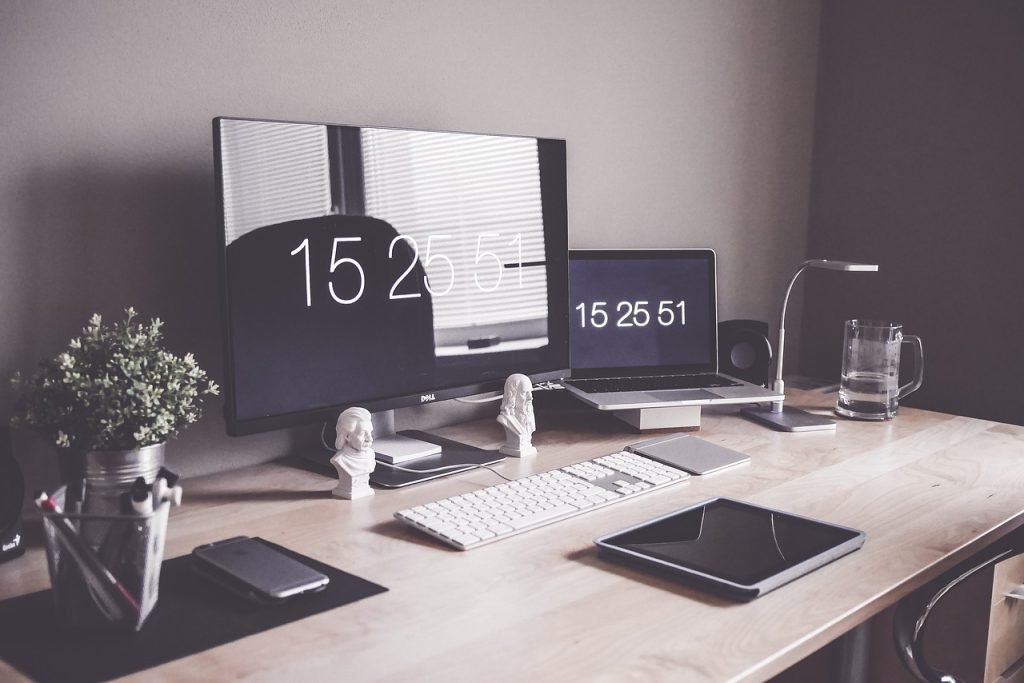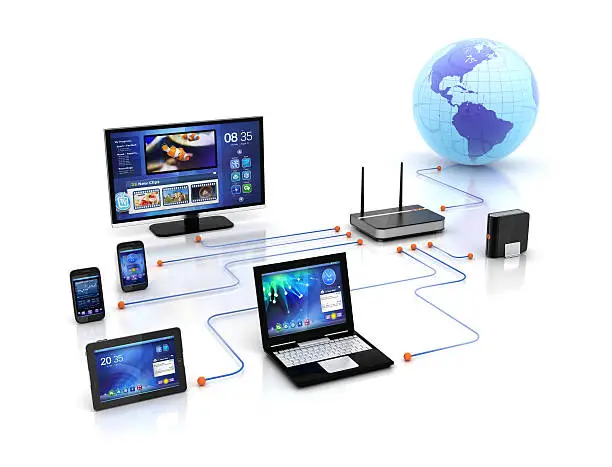How to Connect Laptop to TV:
To connect your laptop to a TV, you have several easy options depending on your devices:
In This Article
- HDMI Cable: The simplest method—just plug one end of the HDMI cable into your laptop and the other into your TV. Select the correct HDMI input on your TV using the remote, and your laptop screen should appear.
- Wireless (Miracast, AirPlay, or Chromecast):
- On Windows, use Miracast by pressing
Windows + Kand selecting your smart TV. - On Mac, use AirPlay by clicking the AirPlay icon in the top menu bar.
- Use Chromecast by casting from Chrome browser to your TV.
- On Windows, use Miracast by pressing
- USB-C or DisplayPort to HDMI Adapter: If your laptop lacks a full HDMI port, you can use an adapter to bridge the connection.
Once connected, you can mirror the display or use the TV as a second screen for more workspace.
Step-by-Step: Wired Connections –
Let’s start with the basics. Wired connections are reliable. They’re a proven way to get your laptop screen on your TV.

how to connect laptop to tv
HDMI: The Essential Connection
Most modern laptops and TVs have HDMI ports. It’s the most common way to connect laptop to tv.
- Find the Ports: Locate the HDMI ports on your laptop and TV. They look like thin, trapezoid-shaped slots.
- Grab an HDMI Cable: You’ll need an HDMI cable. Make sure it’s long enough to reach between your devices.
- Plug It In: Connect one end of the HDMI cable to your laptop’s HDMI port, and the other end to your TV’s HDMI port.
- Change the Input: Use your TV’s remote to switch to the correct HDMI input. You’ll usually see a button labeled “Input” or “Source.”
- Adjust Display Settings: On your laptop, press the Windows key + P. Choose how you want your display to appear. You can duplicate your screen, extend it, or show it only on the TV.
VGA: The Classic (If You Still Have It)
Older laptops and TVs might use VGA. It’s a bit more complicated, but still doable.
- Get a VGA Cable: You’ll need a VGA cable. It’s a blue cable with screws on each end.
- Connect the Cable: Plug one end into your laptop’s VGA port, and the other into your TV’s VGA port.
- Secure the Screws: Tighten the screws on both ends to ensure a stable connection.
- Audio Cable (If Needed): VGA only carries video. You’ll need a separate audio cable (usually a 3.5mm audio cable) to connect your laptop’s headphone jack to your TV’s audio input.
- Change the Input: Switch your TV to the correct VGA input.
- Adjust Display Settings: Use the Windows key + P on your laptop to configure your display.
Wireless Connections: The Revolutionary Way to Connect Laptop to TV
Want to ditch the cables? Wireless connections are the revolutionary way to go.
Smart TVs and Built-in Wireless Casting
Many modern smart TVs have built-in wireless casting features.
- Check Your TV’s Manual: See if your TV supports screen mirroring or casting.
- Enable Screen Mirroring on Your TV: Go to your TV’s settings and turn on screen mirroring or wireless display.
- Windows Key + P: On your laptop, press the Windows key + P.
- Click “Connect to a Wireless Display”: Select your TV from the list of available devices.
- Follow On-Screen Instructions: Your TV might display a PIN or ask you to confirm the connection.
Chromecast: The Genius Device
Chromecast is a small device that plugs into your TV’s HDMI port. It’s a genius way to wirelessly cast your laptop screen.
- Plug in Chromecast: Connect your Chromecast to your TV’s HDMI port and power it on.
- Set Up Chromecast: Use the Google Home app on your phone to set up your Chromecast.
- Open Chrome Browser: On your laptop, open the Chrome browser.
- Click the Three Dots: Click the three dots in the top-right corner of Chrome.
- Select “Cast”: Choose your Chromecast device from the list.
- Choose “Cast Desktop”: Select “Cast desktop” to mirror your entire laptop screen.
Miracast: The Effective Alternative
Miracast is a wireless display standard that allows you to mirror your laptop screen to a compatible TV without needing a Wi-Fi network.
- Check Compatibility: Make sure your laptop and TV support Miracast.
- Enable Miracast on Your TV: Go to your TV’s settings and turn on Miracast or wireless display.
- Windows Key + P: On your laptop, press the Windows key + P.
- Click “Connect to a Wireless Display”: Select your TV from the list of available devices.

how to connect laptop to tv
Troubleshooting Common Connection Issues: Insider Tips
Sometimes things don’t go smoothly. Here are some insider tips to fix common issues.
- No Signal: Double-check all your cable connections. Make sure your TV is on the correct input.
- Poor Image Quality: Use a high-quality HDMI cable. Adjust your laptop’s display resolution to match your TV.
- No Sound: Ensure your audio cables are connected correctly. Check your laptop’s sound settings and your TV’s volume.
- Wireless Connection Problems: Make sure your devices are on the same Wi-Fi network (if applicable). Restart your devices. Update your display drivers.
- Lagging or Choppy Video: Close unnecessary programs on your laptop. Reduce the resolution of your video.
Essential Tips for a Seamless Connection: Actionable Advice
- Keep your drivers updated.
- Use quality cables.
- Adjust your display settings for optimal viewing.
- Restart your devices if you encounter issues.
- Test the connection before you need it.
FAQ: How to Connect Laptop to TV
Q: What cable do I need to connect my laptop to my TV?
A: You’ll typically need an HDMI cable. Older laptops and TVs might use a VGA cable.
Q: Can I connect my laptop to my TV wirelessly?
A: Yes, you can. Smart TVs with built-in wireless casting, Chromecast, and Miracast are options.
Q: How do I change the input on my TV?
A: Use your TV’s remote control and press the “Input” or “Source” button.
Q: My laptop screen is not showing up on my TV. What should I do?
A: Double-check your cable connections, ensure your TV is on the correct input, and adjust your laptop’s display settings using Windows key + P.
Q: Can I play games on my TV using my laptop?
A: Yes, you can. Connecting your laptop to your TV is great for gaming.
Q: My wireless connection is lagging. How can I fix it?
A: Close unnecessary programs, reduce video resolution, and ensure your devices are on the same Wi-Fi network.
Q: Do I need Wi-Fi for HDMI?
A: No, HDMI is a wired connection and does not rely on Wi-Fi.
Q: How to connect laptop to tv using chromecast?
A: Plug in chromecast, connect to the same wifi as your laptop, and cast your chrome browser to the device.
Q: What is the best way to connect my laptop to my tv?
A: HDMI is the best, reliable and most common way.
Q: How do I duplicate my laptop screen to my TV?
A: Press Windows key + P and select “Duplicate”.

